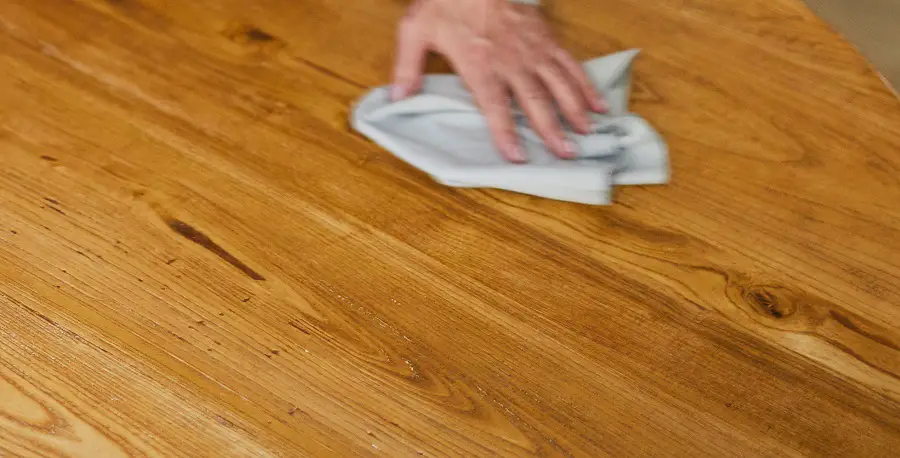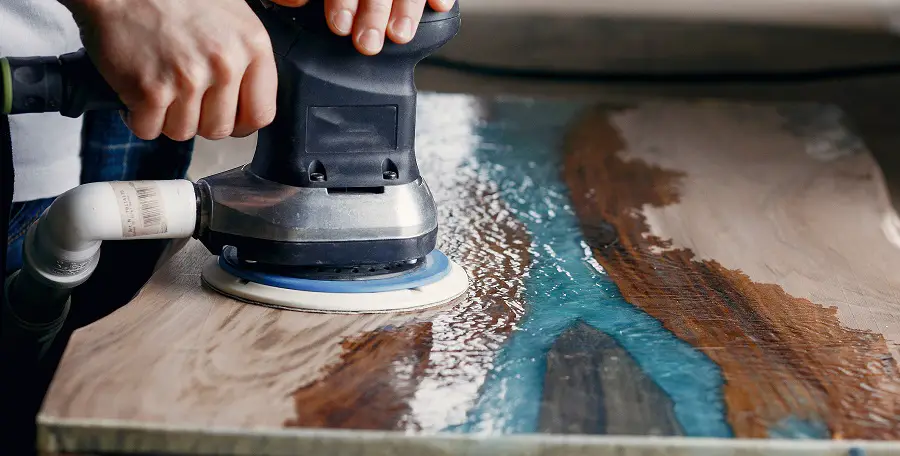It's a problem many of you face, because the question comes up quite often in comments on articles about furniture finishing. I recently received a similar question about the polishing of a serving tray. Even furniture or objects that do not have that very high gloss, also called mirror gloss, lose their shine over time, taking on a duller, duller and sadder appearance. Like anything new, furniture also has a fresher look at first, which slowly fades and a patina of weathering appears that is not to everyone's liking. In most cases, it is not a radical phenomenon that requires the object to be restored, but only small interventions that are more related to the maintenance of the furniture or painted or lacquered objects.

Why it loses its new look and original shine
It seems paradoxical, but both maintenance and neglect of furniture can lead to the original shine fading. That doesn't mean that no matter what you do you can't keep your furniture looking nice. I'm sure there are owners of old furniture who can argue with me. But sometimes overzealousness or incorrect use of materials has the opposite effect of what we want.
Airborne dust and grease particles are the combination that causes the shine to fade over time. Together, they form a film that can't be removed just by wiping off the dust with a dry cloth. It's best seen on kitchen furniture, but that's not the only place where there are grease particles in the air. From time to time, the rest of the furniture needs a more intensive cleaning to remove the fine dust of dirt. Limiting yourself to dry dusting will over time lead to the furniture becoming dull and losing its shine and fresh appearance.
Another reason why the gloss is lost is the use of abrasive materials for cleaning. The small hard particles scratch the varnish or paint film very finely, enough to affect its gloss. Even dust particles can do this, or the hard cloths or washes used for cleaning. Soft cotton cloths are always used for furniture, with those from good quality old cotton shirts being the most suitable. Furniture lighting is due to the paint or varnish film reflecting the light and is higher the smoother the film is, without bumps and imperfections. The appearance of very fine scratches, sometimes even invisible to the naked eye, damages the film and thus the gloss.
The shine can also be affected by special maintenance products. Furniture sprays contain hard waxes which, when sprayed directly onto furniture, harden and are harder to polish. The product should be sprayed onto a cloth or rag and the furniture cleaned and polished with that cloth.
Loss of gloss is sometimes accompanied by whitening or bleaching of the varnish. It can happen from repeated use of a table for ironing, chemical solvents, stagnant water on the surface for a long time, alcoholic drinks or very acidic products spilled on furniture. In this case the damage to the finish is deeper and the damaged layer must be removed and the finish partially or completely re-finished. For information on furniture refinishing here.
What we can do
If there is dirt accumulated over time, the furniture must be washed. We have talked about cleaning furniture with water and dishwashing detergent or soap solution many times and I think there are few now who believe that this will result in whitening furniture. However I will repeat myself by telling you that furniture should be washed from time to time with water and a non-aggressive detergent without abrasive particles. The furniture should be washed with a washcloth dipped in the solution and wrung out thoroughly, then with a washcloth with clean water only, and immediately after washing, wiped with a soft, clean, dry cotton cloth and allowed to dry thoroughly before placing objects on top that would prevent drying and facilitate water stagnation.
If you don't have high gloss furniture, apply a thin coat of clear furniture wax over the entire washed surface after washing. Find wax in any DIY store, sometimes even in supermarkets. Leave for 10-15 minutes and then buff with a soft cotton cloth. The furniture will take on a very nice satin sheen. The method also works on semi-glossy or matt furniture that is very finely scratched by abrasive materials.
If the gloss has been lost due to very fine scratches, and the furniture has had mirror gloss, you need a little more skill to restore it because it needs polishing. Polishing is a very fine sanding that results in the removal of the affected part of the varnish or paint layer. You need an orbital sander (with circular movements) or a drill, felt discs and very fine abrasive solutions, with grits from 1000 upwards. It is best to use 2 types of abrasive in succession, first 1000, then 3000 to remove the affected layer more quickly. ATTENTION! Do not use metal abrasives, they are too hard. Use the special ones for varnish or epoxy resin, which you can find at your local abrasives or varnish and paint dealer. To make your hand try it on a smaller object or a more hidden surface. Be careful not to insist for too long in one place because the surface can overheat. Varnishes are thermoplastic and can soften.

Be careful with maintenance materials
In order not to damage your furniture using maintenance materials you need to know and follow a few rules:
- do not use abrasive materials on painted or varnished surfaces
- do not spray maintenance spray containing wax directly onto the surface of furniture
- if the solutions are water-based, do not allow them to puddle on varnished or painted surfaces
- do not use alcohol-based substances or organic solvents without first testing them on a concealed surface of the furniture
- always read the label and instructions for use
For furniture maintenance try to use natural materials or mixtures that you can make yourself. Find more information here and here. And if you have any questions or queries, please leave them in the space below. I will certainly answer them. Good luck!



























Add comment